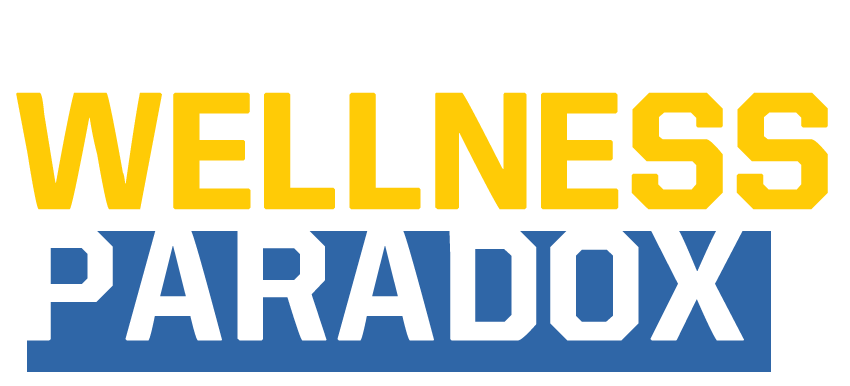Note: this article was originally published by Club Industry on 11/3/22For many years the fitness industry has viewed itself as an essential component of the healthcare delivery system in America. The problem is, broadly speaking, no one outside of our industry views us this way. Look no further than the healthcare crisis of our lifetime (COVID-19) when all of our doors were shuttered. Even more recently, look at the White House Conference on Hunger, Nutrition, and Health; one of the pillars discussed was physical activity. In the administration’s whitepaper published from this conference, the fitness industry wasn’t mentioned — not once.
The wake-up calls abound. As hard as it is to hear, members of the public health and medical communities, as well as our lawmakers and even the general public, view us as more of a non-essential, entertainment commodity than an essential part of our public health infrastructure. This reality coexists with escalating healthcare costs due to chronic lifestyle diseases (diabetes, heart disease, etc.) that our industry could be well-positioned to address through physical activity and exercise. In order to shift perceptions and take advantage of the market opportunity that exists, our industry must be viewed by external stakeholders as a professional member of the allied health community, which we currently are not.
The central issue at hand when we talk about professionalization is the lack of trust and inclusivity. Simply put, the overwhelming majority of the stakeholders I listed in the previous paragraph don’t view our industry as trustworthy or inclusive. When you read that, I realize some might be offended, but it’s objectively true. For years our industry has been mired with bad actors who have utilized dubious sales and business practices, or individuals who called themselves “fitness professionals” extolling quick fixes associated with fat loss, just to make a buck. Even if you consider that assessment subjective, what is objectively indisputable is that our industry has only reached a market penetration of 15 percent to 20 percent of American consumers. In essence, we do a great job of getting the fit, fitter. Until we develop standards and practices that are consistent with an industry that builds trust and casts a wide, inclusive net to all Americans, we will remain lumped in with entertainment businesses such as bars, casinos and theaters.
The challenge that lies ahead is certainly not easy, but it’s also not insurmountable provided that we use the correct framework to get there. The steps below outline the framework that can be implemented by leaders in the industry to elevate our professional standing and become a valued member of the allied health community.
Step 1. Inclusive Imagery, Messaging and Hiring
The first shift we must make is using imagery in our ads and our websites that looks like the 80 percent to 85 percent of the public we need to serve but don’t. Unequivocally, we must do away with stock images of scantily clad fitness models who have dieted down for a photo shoot. No one in their right mind who doesn’t look like that would want to go to a place where the advertisements suggest everyone looks like that. Use imagery that is diverse in terms of body size, shape, ability level and ethnicity. To even distill this to a simpler concept; use real people in regular clothes, not fitness models in a bathing suit.
At the same time, we must greatly improve the inclusivity of our messaging. I realize that words such as exercise, gym, bootcamp, no-pain-no-gain and the like, are acceptable to those of us in the industry. However, those words are unapproachable for the 80-85 percent we don’t currently serve. How many people do you remember in high school doing anything possible to get out of gym class? Why would that person ever want to go to something called a “gym” as an adult? Words such as physical activity instead of exercise or wellness center instead of gym all seem like a subtle difference to us but are fundamentally different for those who are not currently engaging with us.
Finally, it’s not enough to change our imagery and messaging; we also have to hire with greater inclusivity with respect to body shape/size, gender and ethnicity. People will go to where they feel they belong. The greatest validation of belonging is seeing those who look and think like you around you. We must be mindful of this in our hiring.
Step 2. Shift to Science-Based Claims
The lack of science-based claims we’ve made as an industry has caused us to lose trust with the medical and public health community. It also has sowed distrust with the consumer. Past claims typically focused on weight loss and physique transformation, promising unrealistic results for following a specific plan. Knowing full well that extreme (or even modest) physique transformation is not supported by any science, we’ve played on consumer emotions for a better body for decades. When we’ve failed to deliver, we’ve lost trust to the point that now these claims are more of a punchline to a joke than a marketing campaign.
To professionalize, we must shift our emphasis toward science-backed claims that are more focused on health, fitness and well-being — claims such as exercise can improve your mental health, your functional capacity and your energy levels. These claims are not sexy, but the reality is the physique transformation claims are really only focused on 15 to 20 percent of the people we already serve.
Step 3. Educated and Certified Professionals
Establishing professional credibility starts by hiring professionals that understand the science of exercise. Ideally, this means your fitness professional staff has both a degree and nationally recognized certification. This is how it works for every other allied health profession. A nurse graduates from an accredited program with a BSN, then sits for their board exam.
In our industry the bar is much lower. Someone can call themselves a “fitness professional” after paying a couple hundred dollars and taking an open-book, weekend workshop. Nothing in that process suggests any level of professional credibility.
Hiring educated and certified professionals is an investment not only in your business but in the professionalization of our industry. Weekend workshop personal trainers are fine for working with the 15 to 20 percent we already cater to, but if we want to be viewed as professionally credible enough to work with the other 80 to 85 percent who suffer from chronic diseases, we need qualified professionals. For more information about certification organization that meet the requisite professional standards, go to https://usreps.org/
Step 4. Cross-Sector Collaboration
A mature, professional industry focuses on collaboration across sectors to achieve a common goal or vision of a better future. The majority of allied health professions practice cross-sector collaboration well (think of all the referrals that happen across specialties and sectors in healthcare). Traditionally, our industry has been siloed. We’ve looked at other sectors (medicine, parks and recreation, physical therapy, etc.) as competitors more than allies on the common journey to make our nation healthier. We’ve done so to our detriment, as we’ve isolated ourselves.
Developing these cross-sector relationships requires three things. First, to set aside our ego and know we aren’t the singular solution. Second, we must operate within our scope of practice (exercise/physical activity) and not beyond it. Then, we must reach out to other sectors that are on the same mission as we are. We must extend the olive branch first.
Physical educators are teaching our future members of tomorrow. Parks and rec departments have massive reach into communities and are a highly trusted entity. Physical therapists and other allied health professionals need our industry for referrals, and we need them. Cross-sector collaboration is mutually beneficial for all stakeholders and would amplify the reach of the fitness industry tremendously. For a great example of cross-sector collaboration, check out Michigan Moves Month.
Step 5. Outcome Measures
The last leg of our professionalization stool comes with outcomes measures. Simply put, to be viewed as an essential part of allied health, we must be outcome-measures focused. Bottomline, true allied health professionals produce meaningful and tangible outcomes.
We must strive to first produce and then collect outcome data of our members’ holistic fitness (strength, endurance, flexibility) and well-being, not just body fat percentage (although that can be included). We must then make a concerted effort to share those with healthcare providers, ideally connecting our fitness metrics to their medical metrics. A great example would be how our measured improvement in aerobic capacity led to a physician’s measured improvement in blood sugar regulation. If we could accomplish this outcome measure synthesis, we could then tie all of that data to insurance claims. This would be the strongest step toward professionalization, as it would show the quantifiable effect of our efforts at scale.
The Choice Our Industry Must Make
I realize change is difficult, and sometimes the truth hurts. Often though, both are necessary for progress to be made. We, as an industry, have a choice. We can take the steps outlined above and become more professionally aligned with allied health, or we can continue to fight over the 15 to 20 percent of the market that is already fit. Our businesses deserve better, our employees deserve better, and most of all, the health of our nation deserves better. Leaders like you can make this a reality, and the time is now. The choice is yours. What do you choose?







Comments
Post a Comment